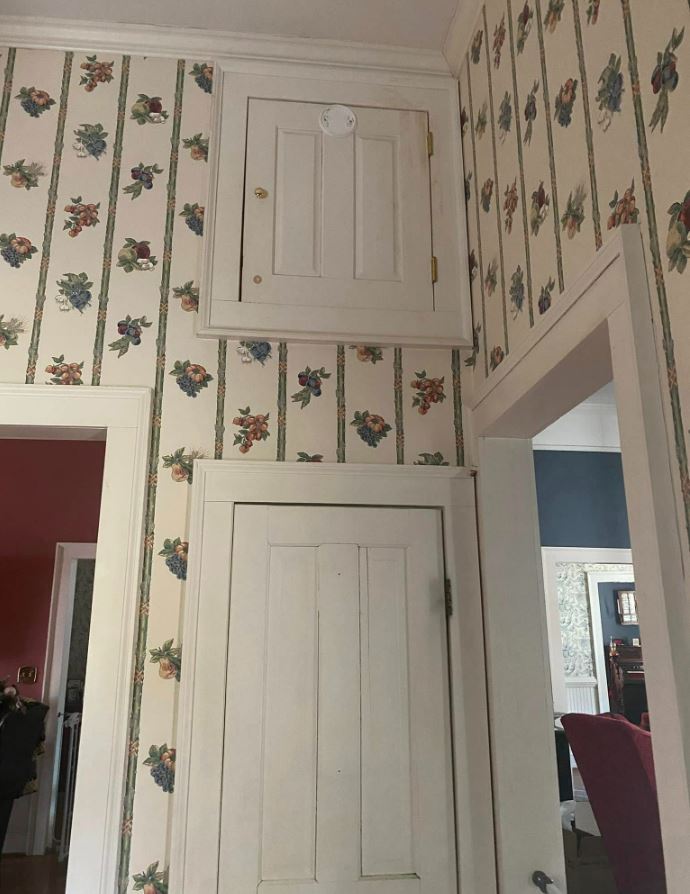If you’ve ever stepped inside an older home, you may have noticed something a little unusual—small cabinets installed high up on a wall, often above doorways or tucked into hard-to-reach corners. At first glance, these cabinets might seem odd or even unnecessary to today’s homeowners who are used to walk-in closets, basements, and expansive storage solutions.

But back in the day, these high cabinets served a very practical purpose and were a clever response to both everyday needs and even tax laws. Before homes were built with built-in closets and dedicated storage rooms, every bit of available space had to be used creatively. These elevated cabinets were the perfect spot for seasonal storage. Families would use them to store items that weren’t needed year-round—like extra blankets for cold winter months, heavy quilts, Christmas decorations, or even off-season clothing. Instead of taking up space in the main living areas, these seldom-used items were stored up high where they wouldn’t get in the way.
Sure, reaching them might require a step stool or small ladder, but for something you only needed once in a while, it was a worthwhile trade-off. What’s especially interesting is that these high cabinets weren’t just about making good use of space—they were also a smart way for homeowners to save money. At certain points in history, closets were considered a luxury feature, and having more of them could actually increase the taxes assessed on a home. That’s right—closet space came at a cost.
So, homeowners and builders found a loophole. Instead of building traditional closets that would trigger higher property taxes, they installed these high cabinets that technically didn’t count as closets. This way, they could still enjoy the convenience of extra storage without paying extra taxes. It was a genius workaround that made sense both financially and practically. The location of these cabinets also reflects the efficient design mindset of the time. They were typically built in places that otherwise would have gone unused—above door frames, at the tops of hallways, or in narrow wall spaces that couldn’t accommodate anything else.
In smaller homes where square footage was limited, every bit of space counted, and these high-up cabinets offered a way to maximize storage without sacrificing room on the floor. Even though accessing them wasn’t always convenient, the functionality they provided more than made up for the hassle. Today, these high cabinets have become a nostalgic detail in older homes. Some people find them charming, a unique nod to the way things used to be built with care and intention. Others might think they’re outdated or impractical, especially in homes where storage space isn’t an issue. But there’s something undeniably appealing about the resourcefulness of past generations. These cabinets are a reminder that design used to be driven not only by aesthetics but also by necessity and ingenuity.
For those who still live in homes with these vintage features, they can absolutely still be put to good use. Maybe you use one to tuck away important papers, store sentimental keepsakes, or even hide valuables in a place that’s out of plain sight. Some homeowners have gotten creative and turned these cabinets into display spaces, decorating them with antiques, books, or small plants to give the room some extra character. Others see them as perfect for storing things you don’t need often but don’t want to throw away.
In a world where modern homes are often packed with built-in storage and streamlined designs, these high cabinets serve as a reminder of a time when people had to be clever with what they had. They show us that even the smallest design choices had meaning, and that there’s value in rethinking how we use space. Whether you see them as quirky, charming, or just plain smart, one thing’s for sure—those high cabinets were anything but useless.





